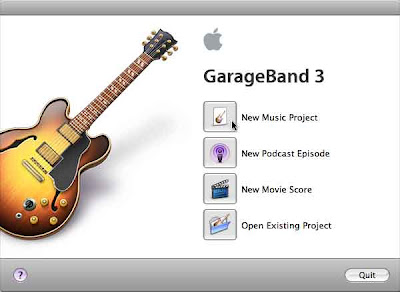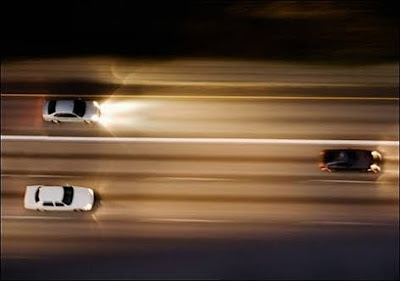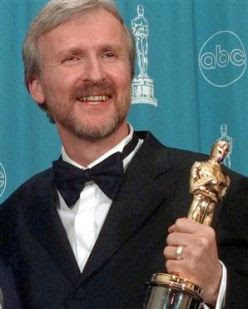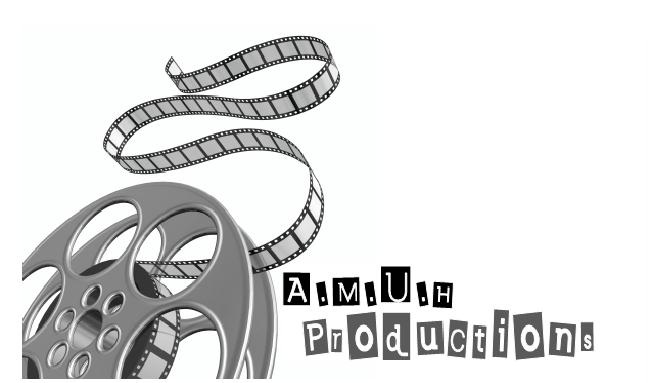Wednesday, 24 March 2010
props
Car: Amar(Carlos) pulls up in the car at the start of the film, creates an image of his authority and power.
Mobile Phones: Phones were very useful to us in our film, using a phone out of the picture was also useful as we used the torch of a phone to create the lighting which fits perfect to our scene as it is not too bright and not too dark. Also we used a phone in the scene were Carlos gets a call from his good old worker Tony.
Costume: Use of costume was essential, Carlos had a very confident and stylish look with all black clothes and a leather jacket going along with some boots and a nice looking furred hood, this gave the character the image it needed. Where as Rico was given a smart look in a suit showing his professional ways in business or even killing.
Use of props in our scene just gives it the extra professional look it needs, by adding in small things creates a complete image of a good thriller , for example Ricko had a cigarette in his hand this is a common habit with gangsters and is a very bad habit. We as a group did not include many props to make it look extra, we tried to keep it simple and also having that effect on the viewers.
the shooting
- We shot every scene about 2-3 times so we can select the best one and carry it forward to our final film after editing, this way we would not have to re-shoot or make any changes as we have few copies of it. One of the main problems we got was the signals of our phones being caught in the shot, this would disrupt our scene and therefore had to be shot again.
- Another problem we faced during our filming was light, as we were shooting at night time we had some scenes that came out very dark on d camera. To solve this we used extra lighting through 'Phone torches' this helped a lot as the light in the phone would brighten up the whole scene with that glimpse of darkness creating a very good image for the viewers.
- One thing i believe our group stood out was on the way we all worked as a team to create the best scenes we could for our group, our cameramen were always on task working very hard to retake every shot if needed even about 30 times as we needed to do so for one of the scenes. The actors in the film were played by members from our group Amar (Carlos) Humzah (Rico) Ahmed (Tony) and Usman as a guard. As an actor in the film i had to keep going through many scenes myself until the team got it right, one scene where i had 2 remove my jacket and put a shirt on got very annoying as i had to keep changing over and over again. Finally after all the problems our team overcame them and went through to which hopefully will be a exciting thriller opening.
march 3rd first shoot
We then left the airport and went straight to the countryside where we had a lovely villa waiting for us to film inside. We had many problems such as, lighting - this made our work look too dark as we didnt have suficient lighting. One scene we filmed was done using nightshot as we film us going into the drive and parking up outside the house. It was very dificult too hold a steady shot as the ground was covered in stones.
We then continued to inside the house where we displayed a 180 degree rule using a mirror, we had to use the perfect amount of light because we only wanted to have Humzah barely visible till he walked inside from the balcony. This is when Humzah confronts Amar where he says a few lines and then pulls out a gun, cocks it back and holds it to Amars face.
new preliminary
The preliminary task was scene with continuity. The basic plot of the scene was a character opening a door and coming in, sitting next to or in front of other character(s) and having a conversation. For this task there were requirements of 3 shots to be used. The 3 shots asked to be used were
Shot/Reverse Shot- is a shot used my many cameramen, the meaning of shot reverse shot is a character shown looking at another character.
180 degree rule- is a famous rule used by many directors; the basic concept of the 180 degree is if two characters are shown in a scene they should have the same left/right relationship. If the camera passes the line of the 180 degree line then the cameraman must show the movement of the camera to the other side. (The picture you can see describes the 180 degree rule)
Match on Action- is basically in other terms the continuity of the scene. If there is a cut in a scene, the next bit of clip must carry on were it left of.
Our Planning/Story
Our story was basically a teacher holding an detention on the weekend. The children are messing about in class room, but are interrupted by a fuming teacher. The shot suddenly cuts to the teacher closing the door and storming in. He walks over to the table and sits down and begins the conversation with the children.
Roles:
Camera Man: Humzah
Actor 1:Mohit (Teacher)
Actor 2:Amar (Student)
Actor 3:Usman (Student)
Editing:
Coming to editing the film was not so hard. We sued the apple software called iMovie. This is where we cut out scenes we has made a mess of and de -creased sizes of clips that were too long. We also added animation in-between cuts through the clips to add more an professional effect.
Wednesday, 17 March 2010
Final cut basic tutorial
Garage Band

What is sound?
there are two types of sound, digetic and non-digetic sound. Digetic sound being the sound where the cast can here while preforming and non-digetic sound being the over sound which can't exactly be heard. sound is the sensation of hearing a noise which makes us believe and react in many different ways. sound can also have a positive and negative impact on films, this is why the correct sound should be used. for example having a fast paced sound while showing slow movements could be very disorientating for the audience, whereas if you were showing a fast paced clip while playing sound with the same pace as the clip they would go hand in hand creating an effect which could capture the audience. For our 2 minute thriller clip, we have decided to use garage band. This is were we can combine a mixture of effects to eventually produce the perfect non-digetic sound. Also garage band allows to slow nd speed up the sound aswell as playing around with the pitch nd tempo.
Meeting March 15th 2010
Group Discussion - Saturday 6th March

On Saturday 6th of March, we began to shoot our first few opening scenes. the first scene we needed was at Heathrow terminal 5, we began shooting when were interrupted by one of the security members asking us for a permit. we replied in the sense we did not have one, nor did we know we needed one. So on the Saturday we did not shoot. Humzah Sarwar took the liberty of contacting Heathrow Airport and talking to the Manager of security, to grant us a permit in such short notice. luckily for us we succeeded and were granted a permit from BAA Heathrow for a duration of 30 minutes. The insuracne cover was £5,000,0000, but with the sweet talk of Humzah Sarwar we walked away with a zilch insurance cover. On Saturday 6th of March, we began to shoot our first few opening scenes. the first scene we needed was at Heathrow terminal 5, we began shooting when were interrupted by one of the security members asking us for a permit. we replied in the sense we did not have one, nor did we know we needed one. So on the Saturday we did not shoot. Humzah Sarwar took the liberty of contacting Heathrow Airport and talking to the Manager of security, to grant us a permit in such short notice. luckily for us we succeeded and were granted a permit from BAA Heathrow for a duration of 30 minutes. The insuracne cover was £5,000,0000, but with the sweet talk of Humzah Sarwar we walked away with a zilch insurance cover. On Saturday 6th of March, we began to shoot our first few opening scenes. the first scene we needed was at Heathrow terminal 5, we began shooting when were interrupted by one of the security members asking us for a permit. we replied in the sense we did not have one, nor did we know we needed one. So on the Saturday we did not shoot. Humzah Sarwar took the liberty of contacting Heathrow Airport and talking to the Manager of security, to grant us a permit in such short notice. luckily for us we succeeded and were granted a permit from BAA Heathrow for a duration of 30 minutes. The insuracne cover was £5,000,0000, but with the sweet talk of Humzah Sarwar we walked away with a zilch insurance cover.


Red Herring

A red herring refers to a device or diversion used to distract the onlooker from the original idea. Red herrings are often seen in films, adventure games, and puzzles. However, the most common use for a red herring is in literature, especially mystery and thriller stories.
Simply put, a red herring is an item which has no use in the story except to distract the reader from the real culprit. The red herring can take the form of a character, which the reader may believe to be the killer, only to discover later that he is innocent. Or it can take the form of an item which readers believe to be the clue to a discovery, but which turns out to be worthless.
Red herring is used in many different ways to confuse viewers or show them a glimpse of danger during a scene, in our thriller scene we have used this at the start of the clip where the character is followed by a car and immediately the viewers think a chase may begin, but nothing happens at the time.
Wednesday, 3 March 2010
Introduction of equipment

he equipment was also introduced to us; this included such things like the video camera and tripod. We were taught how to place the camera on to the tri pod and then assemble the tri pod itself for the right angle and movement.

To help us using the camera a task was set to create a video about anything and then uploading it to the iMacs and using the editing software in iMovie to edit them. This helped us to see how the leads worked and how videos were uploaded. Also getting to grips with different types of animation.

Steven Allan Spielberg

Steven Allan Spielberg is an American film director, screenwriter and film producer, in a career that has covered a period of over 4 years his films have taken up a number of different themes and genres.Speilbergs early films were mainly science fiction and adventure, which then, began to address issues such as the Holocaust (A Holocaust Szemei 2000), Slavery, War (Wagon Train 1957) and Terrorism. Spielberg also teamed with George Lucas who created Star Wars and was Spielberg’s friend.
Spielberg directed the action adventure film, Indiana Jones- Raiders of the Lost Ark who was played by Harrison Ford. It became the biggest film at the box office in 1981, and received numerous Oscar nominations including Best Director and Best Picture. In 1993, Spielberg directed Jurassic park, which for a short time held the record as the highest grossing movie of all time, but did not have the universal appeal like his previous films. He produced and directed Schindler’s List (1993), which was a film about the Holocaust. He won best director at the Oscars, and also got an award for Best Picture. In the mid-90s, he helped to find the production company DreamWorks, which was responsible for many box-office successes.Speilberg directed the thriller Jaws which then went on to get 3 Oscars.
James Francis Cameron

James Francis Cameron was born August 16 1954 and is a Canadian film director, producer, screenwriter, editor and inventor. He wrote and directed Terminator (1984 ) which made $78 million , Aliens (1986) , The Abyss (1989) , Terminator 2 : Judgement Day (1991),True Lies (1994) , Titanic (1997) and Avatar (2009).
In Total Cameron’s directorial efforts have made approximately $1.7 billion in North America and $4.41 billion worldwide, which therefore makes him one of the highest-grossing directors of all time. Cameron made the world famous films Titanic and Avatar, which are the 2 highest grossing films of all time and grossed more than $1 billion in the worldwide box office. Cameron frequently uses these actors and actresses Michael Biehn, Jenette Goldstein, Lance Henrikson, Bill Paxton and Arnold Schwarzenegger. Cameron also was the first director to film both a $100 million film (Terminator: Judgement Day 1991) and a $200 million (Titanic 1997) movie. Cameron’s most famous thrillers were Avatar and the Terminator.
Godfather film review
The film opens in the study of Don Vito Corleone, the Godfather, who is holding court. It is the wedding of his daughter Connie, and no Sicilian can refuse a request on that day. So the supplicants come, each wanting something different - revenge, a husband for their daughter, a part in a movie.
The film has three parts in total, the godfather a thriller/action film isnt a very common type of thriller that we see today in cinemas, it has a very unique way of approchinging the thriller genre. the story line doesnt hold a genuine thriller scene were people are usually murdered and the antagonist usually is a step behind the protagonist. Here In Godfather Mario Puzo has developed a very strong story line which has a gangster status, there isnt much killing going on in the film, however the suspense the storyline brings is utterly amazing the way the film grips the audience makes it a thriller, at times where the main Don is talking it does his voice and his faciaql expressions make you think how can a man like this be so powerful? However you realise during the duration of the film that it is possible for any man to become powerful, or succesful in some cases, not mattering how big or small the person is.
Analysing "jigsaw" the puppet from saw
Use of props and costumes in the film were used very well as jigsaw never showed up himself to the victims instead used a toy puppet with a recorded clip to follow...
Jigsaw is a very freaky character in the film, the story does revolve around the mysterious games of jigsaw which makes the film an all time best thriller. Adding to this in the film we see allot of blood and very disgusting games played which include human bodies being ripped apart and etc.
Premilinary task
The preliminary task was scene with continuity. The basic plot of the scene was a character opening a door and coming in, sitting next to or in front of other character(s) and having a conversation. For this task there were requirements of 3 shots to be used. The 3 shots asked to be used were
Shot/Reverse Shot- is a shot used my many cameramen, the meaning of shot reverse shot is a character shown looking at another character.
180 degree rule- is a famous rule used by many directors; the basic concept of the 180 degree is if two characters are shown in a scene they should have the same left/right relationship. If the camera passes the line of the 180 degree line then the cameraman must show the movement of the camera to the other side. (The picture you can see describes the 180 degree rule)
Match on Action- is basically in other terms the continuity of the scene. If there is a cut in a scene, the next bit of clip must carry on were it left of.
Our Planning/Story
Our story was basically a teacher holding an detention on the weekend. The children are messing about in class room, but are interrupted by a fuming teacher. The shot suddenly cuts to the teacher closing the door and storming in. He walks over to the table and sits down and begins the conversation with the children.
Roles:
Camera Man: Humzah
Actor 1:Mohit (Teacher)
Actor 2:Amar (Student)
Actor 3:Usman (Student)
Editing:
Coming to editing the film was not so hard. We sued the apple software called iMovie. This is where we cut out scenes we has made a mess of and de -creased sizes of clips that were too long. We also added animation in-between cuts through the clips to add more an professional effect.
Quesstionaires
Audience research
We decided we had to ask a range of questions so we could use it to our advantage and use peoples opinions and encrypt it in to our piece of coursework. We not only asked question that related to us and our coursework, but asked question to do with research around the thriller area, for example ‘’How often do you watch a thriller film?’’
Final Destination 3



In the film
“Final Destination 3” we can quickly discover that it is thriller film due to the media concepts used. This film contains alot of suspense which keeps the viewer engaged and makes them want to watch more. It also has alot of blood and this makes it more interesting to watch. Final destination uses a number of media concepts such as imagery and sound to emphasis certain areas of the film.
The 3 scenes in which the media concepts are used effectively and reinforce that it is a thriller move are...
1.This picture shows the scene where the 2 girls are baked to death inside a sun tanning machine. This is evidence of the film being a thriller as it makes the audience sit on the edges of their seats and is full of suspense.
Opening credits
In a television program, motion picture, or videogame, the opening credits are shown at the very beginning and list the most important members of the production. They are now usually shown as text on a blank screen or static pictures, or sometimes on top of action in the show. There may or may not be accompanying music. Where opening credits are built into a separate sequence of their own, the correct term is title sequence.
Opening credits since the early 1980s, if present at all, identify the major actors and crew, while the closing credits list an extensive cast and production crew. Historically, however, opening credits have been the only source of crew credits and, largely, the cast, although over time the tendency to repeat the cast, and perhaps add a few players, with their roles identified (as was not always the case in the opening credits), evolved. The television movies after 1964 and the increasingly short "shelf-life" of films in theaters has largely contributed to the credits convention which came with television programs from the beginning, of holding the vast majority of cast and crew information for display at the end of the show.









